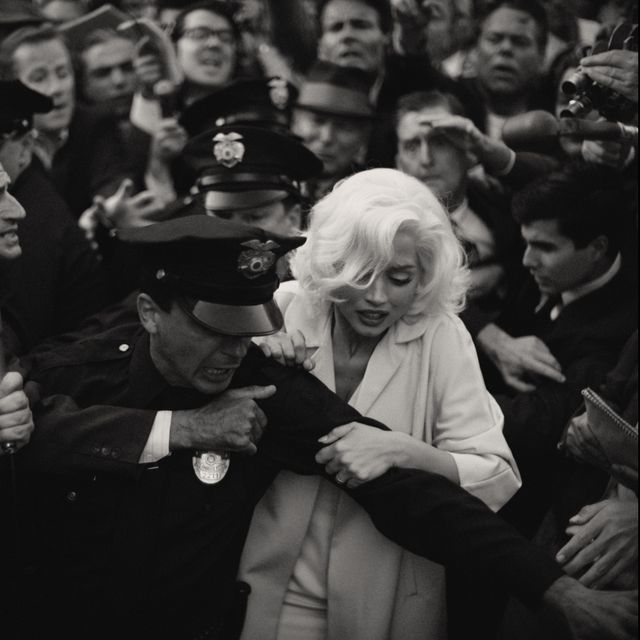Towards the end of Blonde, Marilyn Monroe (Ana De Armas) is shown falling into the depths of drug addiction and despair. The camera almost turns into night mode and shows her to be a paranoid wreck: is there someone bugging her phone? Are they watching her from a van outside her house? Is that shadow in her bedroom a real person?
While there’s no doubt she was in heightened emotional turmoil before her death in 1962 at the age of 36 , she may have had reason for her paranoia, as it has since been revealed that the FBI had opened a file on her. The documents – totalling some 100 pages – can be read in full on the FBI’s website, but here’s the full story on how and why the crime agency targeted a Hollywood actor.
Why was Monroe a person of interest to the FBI?
Monroe, born Norma Jeane Mortenson, was a person of interest not just to her hoards of fans in the ‘50s, but to the United States authorities. However, it wasn’t until she came into the orbit of her soon-to-be third husband Arthur Miller that the federal bureau began to follow her.
At the time, the US was in the throes of the McCarthy witch hunt for communists and people who sympathised with the cause. Miller was on a Red Channels Report of Communist Influence in Radio and Television pamphlet, which listed him as a communist – he later wrote The Crucible as a thinly-disguised response to this attack on public figures – and he was flagged to the House Un-American Activities Committee.
By the nature of their relationship, Monroe was believed to be part of some orchestrated group. One gossip columnist referred to Monroe as “the darling of the left wing intelligentsia, several of whom are listed as Red fronters”. She was warned by her studio bosses to leave the relationship with Miller, for fear it would impact on her reputation as Hollywood’s golden girl.
Matters were also complicated when Monroe was said to have become involved with John F. Kennedy, the president, so naturally that meant even more eyes on her.
What was in the FBI documents on Monroe?
In a Freedom of Information act request in 2012, Associated Press managed to get the redacted Monroe files – that had previously been “lost” – released. It transpired that Monroe had been targeted and monitored for seven years, from 1955 until her death.
According to The Gothamist, one of the earliest entries was an anonymous tip-off to the New York Daily News about how the actress had “drifted into the communist orbit”, with Miller as the frontman of a communist group, and alleged that “Marilyn Monroe Productions was ‘filled with communists’ and that money from the company was being used to finance communist activities”.
Another cause for concern had been her friendship with Frederick Vanderbilt Field, a left-wing political activist and writer who was in exile. In particular, a furniture shopping trip with him in Mexico caused great ire, as per The Atlantic, who quote from the files: “Informants reported to the FBI that a 'mutual infatuation' had developed between Field and Monroe, which caused concern among some in her inner circle, including her therapist. This situation caused considerable dismay among Miss Monroe's entourage and also among the (American Communist Group in Mexico).”
However, despite tracking her for almost a decade, the FBI never found any concrete evidence that she had been a member of the Communist Party. In July of 1962, it simply states: “The subject's views are very positively and concisely leftist; however, if she is being actively used by the Communist Party, it is not general knowledge among those working with the movement in Los Angeles.”
As for any conspiracy theories that she was killed, rather than died by suicide, the FBI files are no clearer with any new information. As Anthony McCartney of Associated Press wrote: “Letters and news clippings included in the files show the bureau was aware of theories the actress had been killed, but they do not show that any effort was undertaken to investigate the claims. Los Angeles authorities concluded Monroe's death was a probable suicide.”














